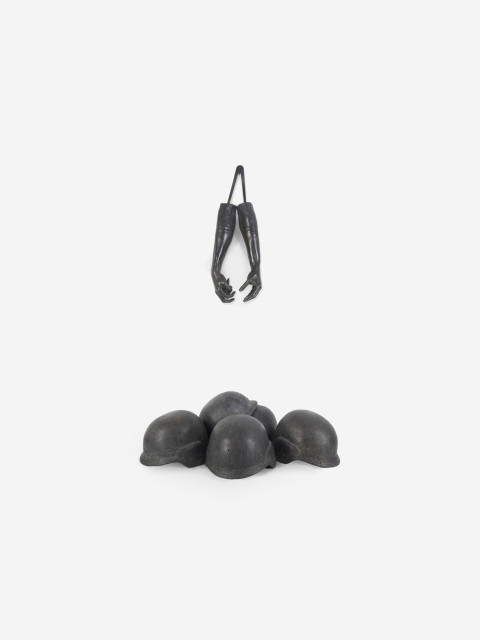Art historians often want to add a veneer of intellectual remove to artists’ work in order to add an academically acceptable rigor or to make it more palatable to a pearl-clutching audience. However, there is rigor in activism, and this is Sara Rahbar’s intervention. Rahbar’s activism is working to expand the individual acts of violence she has experienced into universal ones, to amplify the sufferings of humanity through her chosen materials. The weight of these bronzes is the weight of the world; the marred skin of these bodies is the skin that connects all of us – a skin that can be cut and must bleed even as it can regenerate. These sculptures combine heavy materials – the heft of the soul, perhaps – with intensely precarious arrangements that cause us to feel not optimism, but rather pressure, discomfort, and vulnerability. After all, to require anyone who has experienced racial discrimination to be happy for the sake of the majority is a kind of violence. Rahbar is not interested in rose-colored glasses; she instead casts them aside and gives us only the coldness of bronze. Isn’t this what we deserve?
Something kept running through my mind as I looked at these sculptures: “How can I help these bound and agonized figures?” Who are they? Where do they come from, and what do they need from me? What happened to them? Perhaps Rahbar wants us to feel productively helpless. After Donald Trump’s election and Brexit, white progressives finally felt helpless for a moment, while their colleagues of color have always known that feeling in a racist society.
Privileged liberal individuals, especially millennials, are finally beginning to understand what others have felt all along – a lack of safety, a fear of the state, daily discriminations. Maybe, then, the answer is that we cannot help Rahbar’s figures. They instead suffer so that we may know the price of our silence. They writhe and clench because we have been heretofore reluctant to act, and while we cannot save these individuals, we can work tirelessly until there is no more suffering to illustrate.
– William J. Simmons, January 2017
Lecturer in Art History, City College
Ph.D. Program, Graduate Center of the City University of New York
